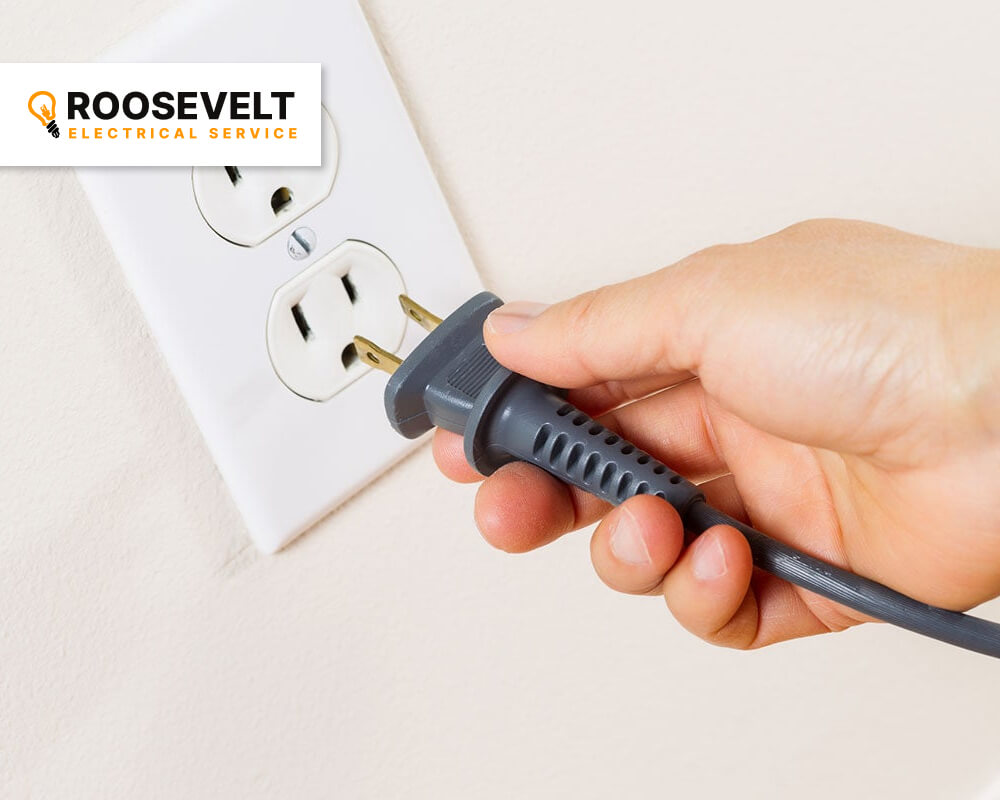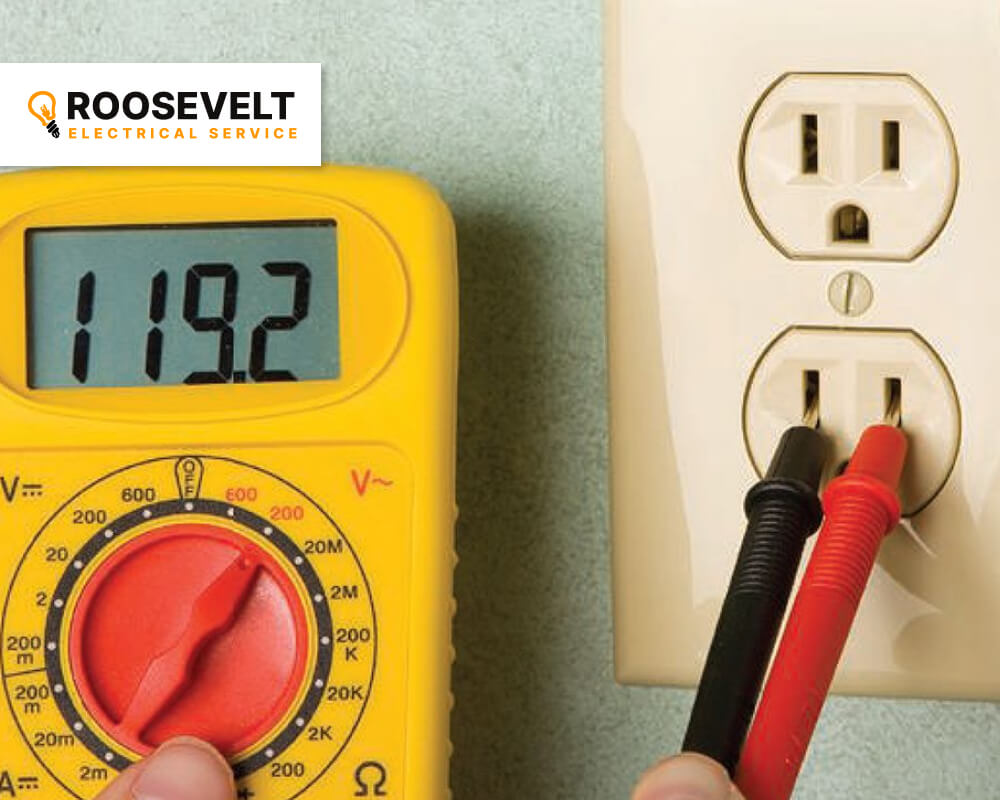
Our experts at Roosevelt Electrical Services suggest that outlet installation should only be done by qualified professionals. It is one thing that a homeowner should consider to ensure the safety of their family.
It is critical to have correct electrical connections in your home, workplace, or place of business since system faults or failures represent a major danger of electrocution, fire damage, and short circuits.
Whether you work in the electrical sector, are tackling a project on your own, or are intending to move out of an office, there are several frequent blunders with the electrical setup at your new site that must be avoided at all costs. The repercussions of incorrect wiring and electrical blunders are not just annoying but potentially disastrous!
Electrical safety is a key topic that, if overlooked, can result in serious electrical risks. According to the National Fire Protection Association (NFPA) research, electrical problems cause an estimated 45,210 domestic fires each year.
Did you know that electrical outlets are the most common cause of electrical fires?
There are a broad number of things that can go wrong, leading to electrical catastrophes, ranging from selecting the incorrect installation position to overloading your electrical outlets.
There’s no harm in going the additional mile to safeguard the safety of your loved ones, which is why we’ve produced a list of electrical outlet installation and usage blunders to avoid.
- Installing outlets near showers. Your bathtub may be the worst spot to put an electrical outlet. Maintain a 3-foot gap between your bathtub and the electrical outlet when installing an outlet. If you have an originally installed electrical outlet near your bathrooms, the first thing on your to-do list should be to get it removed.
- Overloading your electrical outlet. A multi-plug outlet or power strip, contrary to common assumption, cannot always manage huge loads. They feature a load-bearing capability and allow the connecting of many plugs. Connecting many high-voltage devices raises the possibility of electrical danger.
Always put circuit breakers in electrical outlets as a prophylactic step to avoid overloading.
- Leaving outlets unprotected. If you have children, especially toddlers, don’t leave your electrical outlets uncovered. When children stick metal items or their fingers into unsecured outlets, they frequently receive electric shocks.
Installing child-safety wall plates is the best method to avoid this problem. If you don’t want to go through the bother of upgrading your electrical outlet, you may put on plastic covers instead.
- Using loose outlets. We’re all too aware of the difficulties of a faulty outlet. Nothing is more aggravating than plugging in your charger just to have it slip out! Aside from being annoying, this is a big fire hazard. Electrical blades within outlets frequently become loose over time, releasing additional heat that might cause an electrical fire if used for an extended period of time.
- Forcing plugs into mismatched outlets. In addition to utilizing loose outlets, you should avoid inserting a plug into a mismatched electrical outlet. While shoving your appliance’s plug inside may enable it to operate, it might permanently harm your electrical outlet. In more extreme circumstances, they might generate short circuits, which can result in fires.
If you notice any of these electrical problems in your house, it’s time to have them addressed! Delaying the problem will only raise the likelihood of an electrical hazard, endangering your loved ones’ safety and causing damage to your home.
Electrical Outlet Safety Tips Every Homeowner Should Know

Electrical faults and malfunctions have been the second largest cause of house fires in the United States in recent years. However, they are responsible for the majority of deaths and property damage. As your precautionary partners, we’ve found five measures to limit your danger of electrical fire and shock. Learn our electrical outlet safety advice today.
- Updating Your Outlets
If your house still has two-prong electrical outlets, it’s time to upgrade. Replace two-prong outlets with three-prong or ground-fault circuit interrupter (GFCI) outlets. GFCI outlets are designed to protect you from electrical shock. They continuously monitor the flow of electricity via a circuit and will cut power if the outlet comes into touch with water or other detected risks. Put them in your bathrooms, kitchens, garages, and basements. All exterior outlets should also be GFCI-protected.
- Checking Cords and Covers Regularly
Check it out before you plug it in. Cords that have been damaged in any manner should be replaced right away, especially if there are exposed wires. It is also critical to inspect all outlet covers at least once a year. Check that they still surround the wire and are securely secured to the wall. If you come across a broken or chipped cover, you should replace it. Call a competent electrician if any of them are hot, scorched, or humming.
- Not Overloading an Outlet
How much power does your house have? There is, believe it or not, an answer. You’ve tried to use more electricity than you were able to if you’ve ever switched on a hair drier, started a vacuum, or blasted a space heater, only to have it (or power to that area) shut off. Fortunately, circuit breakers can usually be relied on to initiate such a shutdown. However, preventing an overload on your own is more effective. In order to avoid overloading an outlet, follow the tips below:
- Connect large appliances to their own wall outlet.
- Don’t activate too many items at once. (For instance, if you’re vacuuming the living room, turn off the TV.)
- Use LED or CFL light bulbs that are energy efficient.
- Request that an electrician install additional outlets.
- Unplugging Cords Slowly and Safely
When you’re through with anything, hold the base of the plug and carefully pull it out. It’s tempting to tug, but if you’re too far away or at an angle, you might break wires, bend plugs, or harm the outlet itself. Those risks are just not worth it.
- Child-proofing Outlets
It doesn’t matter how many toys your children have if you’re a parent. Electrical outlets are typically more appealing to curious children. This is why electrical outlet safety is so critical. Purchase plugs with plastic prongs to protect your youngster. They’ll fit tightly within the outlet, making them inaccessible to children. Adults may easily remove them for your convenience. To save money, buy these plugs in quantity for a lower per-unit price.
Along with our electrical outlet safety guidelines, make sure you understand how to use a fire extinguisher should the need arise.
If you want to learn more electrical safety tips, please feel free to read our blog posts at your most convenient time. You may also call us here for more information and to book our services should you need one.

